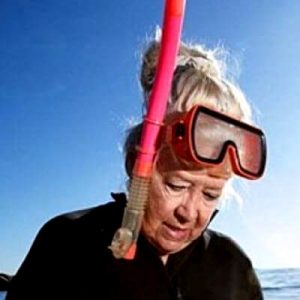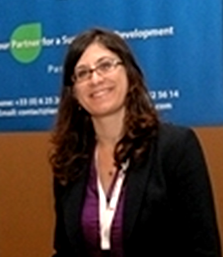
Online | February 28, 2024 from 1:00 to 2:30 pm CET

Vice President, World Academy of Art and Science (WAAS); President, Serbian Chapter of The Club of Rome
Introduction
In August 2023, the United Nations (UN) General Assembly proclaimed the International Decade of Sciences for Sustainable Development, from 2024 to 2031. The task to lead the preparation and implementation of the activities within the Decade was given to UNESCO. This will be going on in close cooperation of that organization and other relevant organizations of the UN system with the Earth-Humanity Coalition, which is an association of a few hundred international, regional, and national non-governmental organizations and private sector entities as well as some governments. WAAS is one of these organizations. It has made a program for the Decade as part of the overall program of the Coalition – the WAAS Program of Sciences for Sustainable Development. The WAAS Talks on Science for Humans Security: Natural Geoengineering Methods for Cooling the Planet was the first event within this program.
Moderator

National Interuniversity Consortium of Materials Science and Technology, University of Florence, Italy; Full Member, The Club of Rome;
Fellow, World Academy of Art and Science (WAAS)
Summary
The current acceleration of global warming is generating great interest in geoengineering technologies to cool the planet. These technologies are already part of the IPCC scenarios, but they are supposed to start being used decades in the future. Instead, it may be necessary to act now, but geoengineering technologies as they are understood nowadays are expensive and carry considerable risks of unpredictable effects on climate. A way out of the problem consists in “Natural Geoengineering Methods”, that are exploiting the natural tendency of the ecosystem to maintain homeostasis. In these WAAS Talks on Science for Human Security, five speakers examined the subject. Anastassia Makarieva, from the Petersburg Nuclear Physics Institute, discussed the role of the water cycle in forests, highlighting how their role is not merely that of a carbon stock, but to generate cooling and stabilize rains. Ted Manning, from the Tourisk organization, Ottawa, and Anitra Thorhaug, from the Center for Natural Carbon Capture, Yale University, examined the role of oceans and coastal regions in stabilizing climate and removing carbon from the atmosphere. Ian Dunlop, from the Breakthrough National Centre for Climate Restoration, Melbourne, provided a review of the climate situation and illustrated the perspectives of a relatively inexpensive geoengineering, marine cloud brightening. Finally, Chaden Diyab, from the Industrial Environment & Sustainability organization, Paris, explored the question of the plight of the South of the world facing the increasingly hard climate problem. The main point that emerged from the seminar is that carbon dioxide, CO2, is not the only villain in the climate change drama. The whole ecosystem is being damaged by human activities, and that has important climate effects, substantially contributing to the ongoing warming. Restoring the ecosystem to its pre-industrial state can have a substantial cooling effect and, in parallel, it may stabilize the climate and reduce the damage created by extreme phenomena, from droughts to hurricanes. This opportunity is especially important for countries in the tropical and equatorial zone. At the same time, we need to understand that restoring the ecosystem is not an easy task when facing the economic pressure to exploit those systems we call “natural resources”. Humankind needs to learn how to exist with the ecosystem of which it is part.
Talks

Theoretical Physics Division, Petersburg Nuclear Physics Institute, Russia;
Institute for Advanced Studies,
Technical University of
Munich, Germany
The role of water vapor phase transitions generated by forests in cooling the atmosphere: Can forests regenerate a healthy climate?
Abstract
Global climate change has two manifestations, global warming and global climate destabilization including an increasing frequency of weather extremes with floods and droughts. While a major part of global warming is robustly linked to CO2 accumulation, assessing and predicting climate destabilization, e.g., via the attribution studies, has proved to be challenging. Among the more recent indications, climate models suffer to reproduce humidity levels in regions most susceptible to droughts. Natural ecosystems, on the other hand, have evolved homeostatic ways of interacting with their climates – in simple words, it is beneficial to be able to support conditions that are beneficial for you. Independent of their influence on global warming, the on-going loss of natural ecosystems may have a disproportionately large role in global climate destabilization. These processes of ecosystem’s active climate-regulating impacts are not investigated intensely enough, as the crucial differences in the functioning of ecosystems with different degrees of disturbance are not commonly recognized and acknowledged. The capacity of disturbed forests to stabilize the climate is impaired. Accordingly, the potential of the relatively undisturbed ecosystems to contribute to climate stability, especially in terms of cloud cover regulation and atmospheric moisture transport, is not properly taken-into-account in the regional and global mitigation/adaptation strategies. This situation undermines our chances of avoiding a global ecoclimatic collapse. It is urgent to undertake efforts bringing the ecosystem’s climate-regulating function to light, in the research community and beyond.


President, Tourisk Inc., Ottawa, Ontario, Canada; Full Member, The Club
of Rome
Living with nature as a means to mitigate negative impacts and promote carbon sequestration
Abstract
All ecosystems support many environmental functions. Land use, protection, and practices affect these functions, including sequestration and/or release of carbon. Central to the ability to influence natural and or managed capacity to absorb carbon is land use planning and management of the land resources. Because farmland and other inhabited properties are primarily privately owned and already in use, change to favor CO2 removal and storage is often much more of a challenge than in oceans or forests that are not in private hands. Good land management and cultivation methods including the choice of crops and cropping methods can be done to favor greater carbon sequestration. In most cases, leaving or restoring the current areas providing natural carbon removal and sequestration is much more extensive and cost-effective than modifying other uses to favor it. Work to regenerate past ecosystems such as forests, wetlands, or grasslands can have positive effects if done properly. Cover crops, legumes, natural covers, use of biochar, and planting trees were found significant in Canada while in tropical and semitropical ecosystems sequestration can be much faster to establish. The use of agroforestry and integrated land management can also affect downstream systems such as wetlands, watercourses, and coastal areas with cumulative effects when many properties comply. Critical is whether sequestration is valued via incentives for conservation or management systems. This can also enhance the capacity to sequester or limit carbon via, for example, zero cultivation, crop selection for specific plants, reduced agricultural chemicals contouring, and other methods including hedgerows, berms, and setbacks. Other means to limit, direct, filter, or contain runoff can support other environmental objectives enhancing the ability to sequester carbon or to sustain current capacity. Worldwide, the best crops for sequestration are bamboo, nuts, olives, native grasses, and perennials. As part of broader systems, many annuals and feed for livestock are not. Carbon sequestration or retention is not central to conservation programs in most regions where conservation programs have specific objectives such as water quality protection or limiting erosion. Until land management agreements at local and regional levels explicitly require or in some way incentivize practices to sustain and enhance carbon sequestration on land holdings, large-scale impacts are unlikely.


Center for Natural Carbon Capture, Yale University, New Haven, Connecticut, USA; President, Greater Caribbean
Energy and Environment Foundation,
Key Biscayne, Florida, USA; Full Member, The Club of Rome;
Co-President, US Association
of the Club of Rome
Carbon capture by blue carbon habitat restoration
Abstract
The oceans not only absorb 35–68% of the excess anthropogenic carbon dioxide, but comprise more than 70% of the Earth’s surface, absorbing much of the incoming solar radiation. A portion of the climate warming is due to the ratio of incoming solar energy vs. reflected energy (Corell et al., 2024, ”Human activity is said to produce 2 billion tons of CO2 per year, but recent data indicates that it could be 0.8–0.9 billion tons larger.”). Recently, major global coastal ecosystems’ natural processes of carbon dioxide sequestration have been shown to be 5 to 10 times more efficient than terrestrial tropical forests processes, previously considered the zenith of sequestration. Our own studies comparing global tropical coastal ecosystems’ blue carbon show in the top meter of sediment mangroves 200–500 MgCorg/ha, for seagrass 125–250 MgCorg/ha, and for salt water marshes lesser amounts. Seagrasses generally occupy more extent than mangroves. Mangroves are only found in tropics & subtropics, whereas boreal areas contain mostly marshes. Our marine sequestration overview comparison among tropical regions shows that sequestering periods per year are substantially greater than in temperate or boreal regions. Combined total of seagrass + mangroves + marshes first meter sequestration of Gulf of Mexico (480.5 TgCorg), Caribbean (1,621 TgCorg mangroves alone), and Southeast Asian (4,778.67 TgCorg) basins is 6,879.5 TgCorg. We presently investigate the Indian Ocean. Estimates for the depths of sediment underlying mangroves/seagrass are 34,397.5 TgCorg. This coastal tropical sequestration rate is clearly larger than temperate or boreal rate. Much human growth degradation is occurring at land/sea interface in tropical coastal ecosystems. Coastal blue carbon management requires fast-based plans for regenerating key ecosystems. Natural regeneration of these degraded areas is at least an order of magnitude slower than by human intervention. Blue carbon plans take significant labor (facilitating a wealth transfer) furnished by donors searching for ”carbon credits”. The ”newly industrializing nations”, generally in the tropics (Caribbean, South America, Africa, Southeast Asia, Island Nations, etc.), provide excellent cites to store carbon with low labor costs allowing maximum cost benefit.

Member, Advisory Board, Breakthrough National Centre for Climate Restoration, Melbourne, Australia; Chair, Australian Security Leaders Climate Group; Full Member, The Club of Rome
Perspectives on marine cloud brightening
Abstract
Global action to address climate change has been totally inadequate to avoid worst-case climatic outcomes being generated by the accumulating atmospheric greenhouse gas concentrations. Accelerating climate impacts over the last two years in particular indicate that humanity runs a rapidly increasing risk of climate change moving into irreversible ”Hothouse Earth” conditions even in the short term. Rather than limiting temperature increase to the 1.5–2 °C range of the Paris Agreement, current global emission reduction commitments indicate an outcome of 3–4 °C and social collapse. If this is to be avoided, emergency action is required to cool the planet and protect vital systems, in addition to a rapid drive to reduce emissions and large-scale carbon drawdown from atmosphere, far sooner than before 2050. Marine cloud brightening is a technique to generate low, white, and thick clouds to increase the amount of solar radiation reflected back into space, and hence cool selected areas of the planet, for example, in the Arctic, to buy time whilst global climate action is, hopefully, accelerated. It uses natural sea salt nanoparticles, sprayed into the Marine Boundary Layer below existing clouds, to create whiter and more extensive cloud cover, hence increasing the albedo effect.


Founder, IES EMEA (Industrial Environment & Sustainability)
and Green Education Program
in the Middle East and North
Africa (MENA) Region,
Paris, France
Geoengineering: The view from the South of the world – Exploring sustainable alternatives innovations
Abstract
Nature, as described by Avicenna, is an inherent force driving motion and stability within its domain. This implies that Nature inherently possesses solutions for fostering healthy ecosystems and safeguarding the environment. Yet, do we overlook this aspect of Nature’s capacity for dialogue and regeneration? How can we leverage Nature-based Solutions (NbS) and frugal innovation to draw inspiration from our surroundings amidst the climate crisis, promoting sustainable and ethical approaches to repairing the relationship between humans and the Earth? How can we derive sustainable solutions and economic benefits by emulating Nature’s methods? The climate crisis, primarily caused by human activities, prompts a reevaluation of our interactions with Nature. Our daily choices, spanning consumption, politics, and industrialization, have triggered climate change, often rooted in delayed, habitual, or conventional practices. This elicits responses from the environment. How can we foster continual engagement between humans and Nature? In regions facing harsh climatic and economic conditions, local innovations effectively integrate Nature’s materials for construction, water irrigation systems, and agriculture. Can we learn from these innovations to develop adaptive solutions and explore alternative resources, logics, values, and knowledge in climate action? This perspective offers a nuanced understanding of the climate crisis, recognizing Nature’s regenerative potential and our role in facilitating its healing. It suggests an alternative dimension of innovation and technology that aligns with humane values, often overlooked in environmental discourse.
